Q
How much oil does a Toyota Corolla take?
The oil capacity of the Toyota Corolla varies depending on the specific year and engine model. For the commonly found 1.8L (2ZR-FE) and 1.5L (2NR-FE) engines in Malaysia, you'll typically need around 3.7 to 4.2 liters when changing the oil, including the oil filter. The 1.6L (1ZR-FE) engine, on the other hand, usually takes about 4.2 to 4.4 liters. It's always a good idea for owners to check the owner's manual or use the dipstick under the hood to ensure the oil level sits between the "MIN" and "MAX" marks.
When it comes to oil selection, I recommend going with fully synthetic oils that meet API SN or SP standards, specifically 5W-30 or 0W-20. These viscosities work well with Malaysia's tropical climate, striking a nice balance between fuel efficiency and engine protection.
It's worth noting that the general oil change interval is every 10,000 kilometers or 6 months, whichever comes first. But if you often do short trips or spend a lot of time idling (like in traffic jams), consider shortening that to 5,000 kilometers to keep your engine in top shape. Also, when you get an oil change, make sure to replace the oil filter at the same time to maintain proper filtration. And if you're topping up oil yourself, avoid mixing different brands or specifications, as this can cause sediment buildup.
Special Disclaimer: This content is published by users and does not represent the views or position of PCauto.
Related Q&A
Q
What is the most sold car in the world in 2024?
As of 2024, the world's best-selling car model remains the Toyota Corolla. This classic family car continues to win over global consumers with its reliability, fuel efficiency, and great value for money. It's especially popular in Southeast Asian markets like Malaysia, where its durability and low maintenance costs make it a perfect fit for local road conditions and driving habits. Broadening the view a bit, the Corolla's success also reflects trends in the global auto market – consumers are increasingly leaning toward practical, fuel-efficient vehicles that are easy to repair. Toyota's hybrid variants, like the Corolla Hybrid, have further boosted its eco-friendly image, aligning with the current push for energy conservation and emissions reduction. For Malaysian buyers, the locally assembled (CKD) Corolla offers a more competitive price point, and Toyota's extensive after-sales service network in the country is another reason it's a top pick for many families. While rivals in the same segment, such as the Honda Civic and Nissan Sylphy, perform well too, the Corolla maintains its lead thanks to its well-rounded overall strength.
Q
Are there any problems with the 2019 Toyota Corolla?
The 2019 Toyota Corolla has proven to be a solid performer in Malaysia. While a small number of owners have noted a slight jerkiness from the CVT transmission at low speeds, and some trims could use better sound insulation at highway speeds, these are far from common issues and don't really hinder daily driving. What truly stands out is its 1.8L Dual VVT-i engine paired with the TNGA chassis – the fuel efficiency is impressive, and the handling feels stable, especially handy for Malaysia's twisty roads. The standard Toyota Safety Sense suite, which includes pre-collision warning and lane keep assist, is a rare and welcome safety bonus in this segment.
Drivers here have also praised the Corolla's air conditioning system for keeping things cool even in Southeast Asia's sweltering heat. Plus, the locally-assembled models come with extra rust protection, which is smart given the tropical climate. If you're looking at a used one, keep an eye on the battery condition and make sure the transmission fluid has been changed regularly – the heat and humidity here can take a toll on rubber components over time.
Compared to other Japanese models in its class, the Corolla offers noticeably lower maintenance costs. Toyota's 5-year warranty is another big plus for long-term peace of mind, and let's not forget – its durability is already well-proven by how many you see in taxi fleets around Malaysia.
Q
What is the most popular car color for 2025?
Based on global automotive color trend reports and analysis of Malaysia's market preferences, the most popular car colors for 2025 are projected to be **natural tones**, with a particular emphasis on **earth shades** (think sand, taupe) and **muted greens**. These hues not only align with eco-conscious values but also complement Malaysia's lush tropical landscapes beautifully.
Neutrals like white and gray remain steadfast favorites among Malaysian buyers, but there's a growing shift toward unique, dirt-resistant matte and metallic finishes. Younger drivers, in particular, are gravitating toward soft yet distinctive tones such as haze blue or light khaki.
What's more, as electric vehicles gain traction, tech-forward shades like silver-gray and pearl white are holding strong – they really make a car's lines pop and enhance that modern, cutting-edge vibe.
A key consideration? Malaysia's hot, rainy climate makes heat-resistant, easy-to-keep-clean colors way more practical. It’s no surprise automakers are pushing these options hard.
If you’re in the market for a new ride, factor in the local weather and long-term appeal. And don’t forget, many brands now offer custom color services – the perfect way to blend personal style with everyday functionality.
Q
What kind of engine is in the 2025 Toyota Corolla?
The 2025 Toyota Corolla is expected to continue offering both petrol and hybrid powertrain options in the Malaysian market. The petrol variants will most likely be equipped with the 1.8L or 2.0L Dynamic Force naturally aspirated engines, paired with the Direct Shift-CVT gearbox. The 2.0L version, in particular, should deliver around 169 horsepower, striking a good balance between smooth driving and fuel efficiency. On the hybrid side, the fifth-generation THS II system will be featured, combining a 1.8L Atkinson-cycle engine with an electric motor for a combined output of approximately 138 horsepower. A key upgrade here is the shift to a higher energy density lithium-ion battery, which should translate to better electric-only range and snappier low-speed response.
It's worth highlighting that Toyota has been placing significant emphasis on tropical-adapted engine tuning for Southeast Asian markets in recent years. This includes optimizing cooling systems specifically for hot and humid conditions, a detail that will resonate well with Malaysian drivers. For those craving more performance, the hot-blooded GR Corolla is always a topic of interest, though the chances of it making its way to Malaysian shores remain slim.
Regardless of the variant, the Corolla's engine technology continues to prioritize durability and low maintenance costs – traits that align perfectly with Malaysia's diverse road conditions and typical driving habits. Whether it's daily commuting or longer highway stints, this car is more than up to the task.
Q
Does the 2025 Corolla have AWD?
The 2025 Toyota Corolla does offer all - wheel drive (AWD) on select trims, especially in the North American market. Typically, the AWD system is paired with gasoline - powered variants, whereas hybrid models may not offer this option.
In Malaysia, the AWD system can definitely provide better traction and stability, whether you're dealing with slippery roads during the rainy season or tackling some light off - road trails. But don't just rely on this information - always check Toyota Malaysia's official announcements for the exact specs. Your best option is to visit their website or go to a dealership to confirm what's available locally.
So, how does the AWD system work? It dynamically shuffles torque between the front and rear wheels to sharpen handling, but there's a trade - off: you'll see a slight increase in fuel consumption and a higher purchase cost. So, it really comes down to balancing your needs with your budget.
If your daily driving is mostly city commuting, a front - wheel drive Corolla should serve you just fine. But if you regularly drive through rainy areas or rough terrain, opting for the AWD version might be worth it.
And let's not forget the competition – rivals like the Honda Civic or Mazda3 also offer similar drivetrain choices in some markets. But each brand puts its own spin on the tech and tuning, so they'll feel different from the Corolla out on the road.
Q
How much is the invoice price for a 2025 Toyota Corolla?
When it comes to the invoice price of the 2025 Toyota Corolla, the official pricing for the Malaysian market hasn't been officially announced yet. Typically, new car prices are released by UMW Toyota Motor (Toyota's Malaysian distributor) closer to the launch date, so it's best to keep an eye on their official website or check with authorized dealers for the latest updates. For reference, the 2024 Corolla ranges from around RM130,000 to RM150,000 in Malaysia, depending on the trim level. The 2025 model might see slight adjustments due to upgraded features or currency fluctuations. When buying a car in Malaysia, beyond the invoice price, you'll need to factor in additional costs like registration fees, insurance, and road tax—these usually add up to about 5% to 10% of the total vehicle price. What's more, the Toyota Corolla has long been a favorite among Malaysian buyers for its reliability and low maintenance costs. If available, the hybrid version could further cut down on fuel expenses. Before making a decision, it’s wise to compare configurations and long-term running costs across different variants. Also, don’t hesitate to ask dealers about any ongoing promotions or financing packages to get the most out of your budget.
Q
Where is the 2025 Toyota Corolla made?
The production setup for the 2025 Toyota Corolla remains pretty similar to the current model. It's mainly rolling off the lines at Toyota plants in Japan, the US, and select Asian countries like Thailand. For the Malaysian market, some Corolla units will likely be imported from Thailand – makes sense, right? Thailand's a major Toyota hub in Southeast Asia, and being close to Malaysia helps keep shipping costs down and gets cars delivered quicker.
As one of the world's best-selling cars, the Corolla has a production network spread across multiple countries to keep supply steady and cater to regional demands. Malaysian buyers can rest easy because no matter where it's built, Toyota sticks to those strict global quality standards.
On top of that, the Corolla's always been known for being reliable, fuel-efficient, and comfortable to drive – perfect for Malaysia's roads and climate. If you're looking to buy one locally, check out Toyota Malaysia's official website or swing by an authorized dealer for the latest specs and after-sales info.
Q
What is the fuel economy of the Toyota 2025?
Toyota hasn't spilled the beans on exact fuel economy figures for its 2025 models just yet, but we can get a pretty good idea by looking at how their recent rides have been sipping fuel. Take the Corolla Cross with the Dynamic Force engine, for example – in real-world tests here in Malaysia, the hybrid version clocks in around 5.7L/100km. And the new Camry Hybrid? That one's even thriftier, pulling off about 4.1L/100km.
Looking ahead to 2025, Toyota's likely to tweak their powertrains even more. We might see the next-gen THS IV hybrid tech or even plug-in hybrid options, which could boost fuel efficiency by 5-10%. For us Malaysian buyers, going hybrid isn't just about dodging the ups and downs of RON95 prices – there's also those sweet tax breaks for Energy Efficient Vehicles (EEVs) to consider.
Of course, it's worth remembering that real-world fuel consumption can vary a lot depending on how you drive, the roads you're on – think KL's stop-start traffic – and how much you blast the air-con. So, if you're in the market, it's always a good idea to take a test drive and get a feel for the actual fuel usage yourself. On a practical note, Toyota's already localizing production for some models here, like the Corolla Cross, which should help keep maintenance costs more wallet-friendly down the line.
Q
What is the cheapest new car in 2025?
Looking to score the cheapest new ride in Malaysia come 2025? The Perodua Axia is still expected to hold that title. It’s been a mainstay in the entry-level market for ages, and for good reason – it’s easy on the wallet and comes with all the practical stuff you need, perfect if you’re shopping on a tight budget. That 1.0L engine? It’s a solid all-rounder, balancing fuel sipping with the demands of daily commuting. Even the base model doesn’t skimp on the essentials, packing ABS and airbags, while the higher trims might treat you to extras like a touchscreen and reverse camera.
If you’re open to other options, the Proton Saga is another big name in the value-for-money game. It might cost a smidge more than the Axia, but you get a roomier interior, which makes it a better pick for families.
Let’s be real, the small car scene in Malaysia is pretty cutthroat. When you’re picking your next set of wheels, you’ve got to weigh up a bunch of things: price, how thirsty the engine is, warranty deals, and even how well it’ll hold its value as a used car. Local brands like Perodua and Proton usually have the edge when it comes to cheaper maintenance and a more accessible after-sales network. On the flip side, some imported brands like Toyota or Hyundai might throw out some tempting deals on their entry-level models during promotions. Just keep in mind, things like import taxes and the cost of spare parts could hike up your long-term ownership costs.
My two cents? Before you sign on the dotted line, check out what each brand is offering in terms of promos. And don’t forget to think about how you’ll actually use the car – is it mostly for zipping around the city, or do you need something for longer road trips? Figure that out, and you’ll be in a great spot to make the best choice.
Q
How much will the 2025 Corolla cost?
The 2025 Toyota Corolla GR Sport is priced at RM 149,800. This C-segment sedan is powered by a 1.8-liter petrol engine, churning out 139 horsepower and 172 Nm of peak torque, paired with a 10-speed CVT gearbox. It drives the front wheels, with a MacPherson strut independent suspension up front and a double-wishbone independent setup at the rear. Safety kit includes 7 airbags, ABS, and vehicle stability control. On the convenience front, you get keyless entry, automatic climate control, and a 10-inch capacitive touchscreen. This pricing aims to hit the sweet spot for buyers in this segment looking for a solid mix of performance, comfort, and safety.
Popular Cars
Model Year
Car Compare
Car Photo
Latest Q&A
Q
Is the 1.5 L 4 cylinder?
Yes, a 1.5L engine is typically a 4-cylinder setup—the most common configuration for small to mid-sized displacements. This layout strikes a solid balance between fuel efficiency and power output, making it ideal for daily commuting and family use. Four-cylinder engines are relatively simple in design, cheaper to maintain, and benefit from proven technology that delivers smooth operation. You'll find this configuration widely used by mainstream brands like Honda, Toyota, and Mazda. While there are some 1.5L 3-cylinder options out there, the 4-cylinder remains the go-to choice, especially in models prioritizing durability and refinement. If you're shopping for a 1.5L-powered car, pay attention to specific tech features—turbocharging, direct injection, etc.—as these can significantly impact real-world driving dynamics and fuel economy.
Q
What is the displacement of a V8 engine?
The displacement of a V8 engine typically ranges from 4.0 to 6.2 liters, depending on the vehicle and its purpose. For example, high-performance sports cars often pack a 5.0-liter or larger V8, while trucks and SUVs usually stick with something between 4.3 and 5.7 liters. Known for its brute power and smooth operation, the V8 is a go-to for acceleration and towing—though its thirst for fuel is something buyers always weigh up.
These days, turbocharging has changed the game. Smaller-displacement V8s (like a twin-turbo 4.0L) can now deliver big-block performance with slightly better efficiency. And let’s not forget the sound—few things beat the roar of a tuned V8 exhaust, a big reason why enthusiasts love ‘em.
If you’re into V8s, keep an eye on local used car listings or auto shows—you’ll often spot some gems there.
Q
What is the difference between 1l and 1.2 L engine?
The key difference between 1-liter (1L) and 1.2-liter (1.2L) engines comes down to displacement—the total volume of all cylinders in an engine, measured in liters. Generally, a larger displacement means more power and torque, so a 1.2L engine will likely feel stronger during acceleration, highway driving, or when tackling hills with a load. That said, it’ll also drink a bit more fuel compared to the 1L.
The 1L, being smaller, prioritizes fuel efficiency, making it a smart pick for city commuting or everyday runs. On the flip side, the 1.2L’s extra performance often means higher manufacturing costs, which might bump up the car’s price tag. Plus, the 1L’s compact size fits better in smaller or budget-friendly models.
Your choice really hinges on driving needs: go for the 1.2L if you regularly hit the highway or want more grunt, but stick with the 1L if you’re mostly urban-bound and watching fuel bills. Oh, and don’t forget—tech like turbocharging or variable valve timing can squeeze near-equal performance from smaller engines these days, so specs alone don’t tell the full story. Always check how the engine’s tuned.
Q
What does 5.7 liter engine mean?
A 5.7-liter engine refers to a total displacement of 5.7 liters, meaning all cylinders combine for a total working volume of 5,700 cubic centimeters. Generally, a larger displacement allows the engine to take in more air and fuel, delivering stronger power and torque—making it ideal for performance-oriented vehicles or those built for heavy-duty work, like pickup trucks, full-size SUVs, or muscle cars.
In the local market, you’ll often find big-displacement engines in American-branded vehicles. These engines excel at high-speed cruising or towing heavy loads, though they do come with higher fuel consumption and increased running costs.
Thanks to advancing technology, many automakers now use turbocharging or hybrid systems to help smaller engines deliver power comparable to older, larger naturally aspirated units—like how some modern 2.0L turbocharged engines can match the performance of older V6 engines while being far more fuel-efficient.
If fuel economy is a priority, a smaller turbocharged or hybrid model might be the better choice. But if you value the smooth, raw power of a classic big-block, a 5.7-liter engine remains a timeless option.
Q
What liter engine is a V6?
The displacement of a V6 engine isn't set in stone—it typically ranges between 2.5 and 4.0 liters, depending on the vehicle's design and purpose. For example, a family sedan might pack a 2.5L or 3.0L V6, while performance cars or pickups could go for 3.5L or larger. Displacement directly impacts power output and fuel economy: bigger usually means stronger, but thirstier too.
Named for its six cylinders arranged in a V-shape, the V6 strikes a sweet spot—delivering smoother operation and better balance in a compact package compared to four-cylinder engines, while being more fuel-efficient than V8s. That's why it's a popular choice for midsize sedans and SUVs.
These days, with turbocharging becoming commonplace, smaller-displacement V6 turbos can match the punch of older, bigger engines while sipping less fuel. Choosing one? Think about your daily needs. A 2.5L works fine for city commutes, but if you're frequently hitting the highway or towing, step up to 3.0L or above.
View MoreRelated News

Toyota unveils the new Corolla at the Auto Guangzhou in China. What changes will the future Corolla have?
AshleyNov 25, 2025

Toyota Corolla facelift model unveiled, the new front design looks like Camry
JamesSep 11, 2025

2026 Toyota Corolla Hybrid launched in North America, offering all-wheel drive option
Kevin WongJul 29, 2025
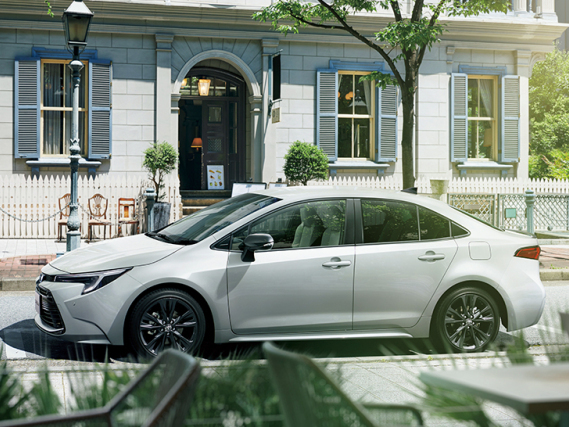
Toyota has Launched a Revamped Version of Corolla in Japan, No Longer Sell Gasoline-Powered Corolla
Kevin WongMay 12, 2025
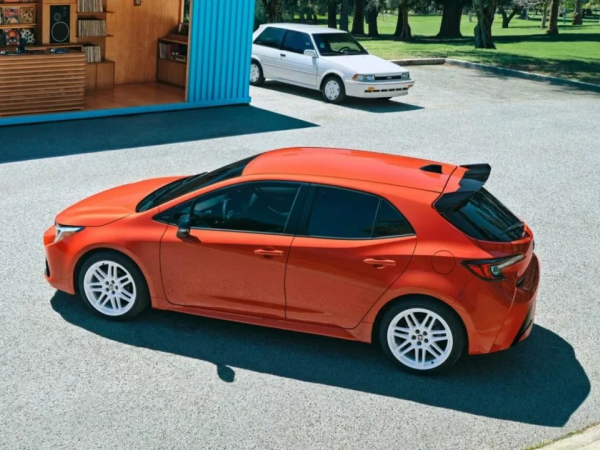
Toyota Plans to Launch 2026 Corolla Hatchback FX: A Nod to the 1987 FX16
WilliamMay 9, 2025
View More






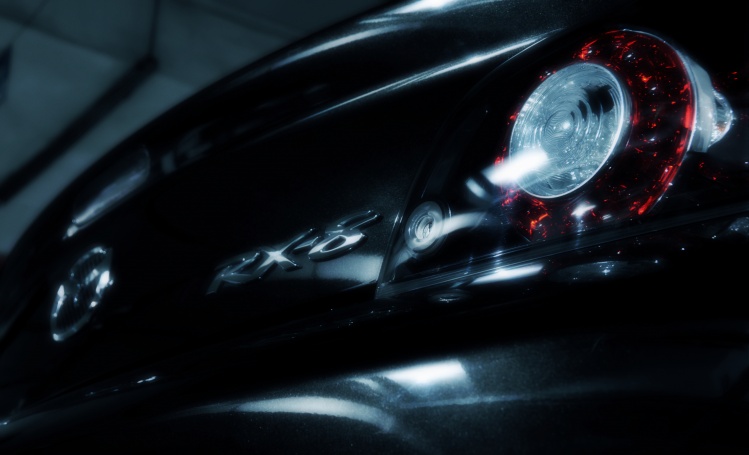

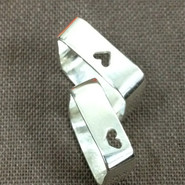
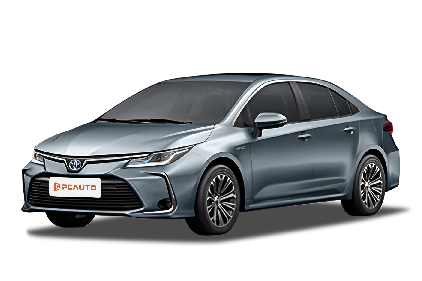





Pros
Cons